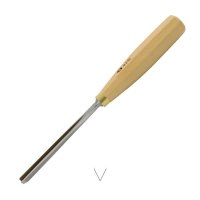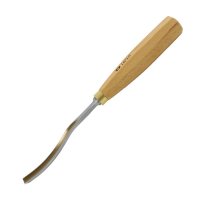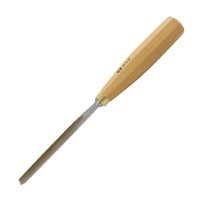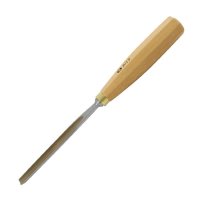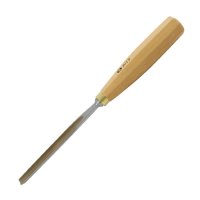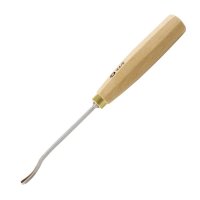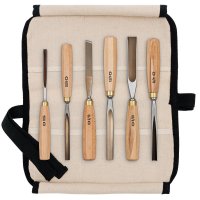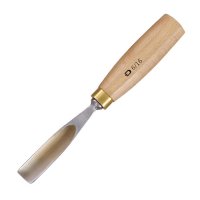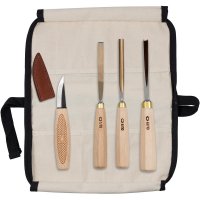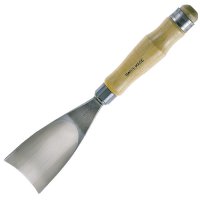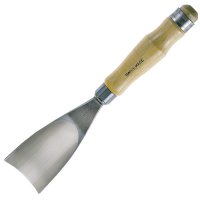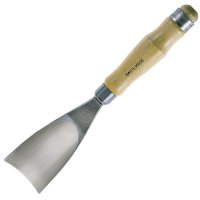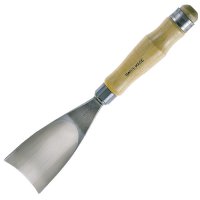By selecting the settings and clicking on "Save settings", you give us your consent for us to use the selected cookies and technologies and the associated data processing in accordance with Art. 6 (1) (1) (a) of the GDPR. When cookies and similar technologies are used, data may also be processed in countries that are not part of the European Economic Area. You can find more information in our Data Privacy Policy.
Purpose:Marker that the visitor has clicked the back button and the display tab restore must be performed.
Provider: dictum.com
Type: Local/session storage
Purpose: Display of the visitor-specific promotion codes. Marker that the modal box should remain closed.
Provider: dictum.com
Type: Local/session storage
Purpose: Provision of the conversion factors for the currency converter.
Provider: dictum.com
Type: Local/session storage
Purpose: Storage of the currently selected currency in the currency converter.
Provider: dictum.com
Type: Local/session storage
Purpose: Provision of the glossary entries.
Provider: dictum.com
Type: Local/session storage
Purpose: Marker for the display tab restore when clicking the back button.
Provider: dictum.com
Type: Local/session storage
Purpose: Marker whether a cleanup of the Local Storage has taken place.
Provider: dictum.com
Type: Local/session storage
Purpose: Marker for the display tab restore when clicking the back button.
Provider: dictum.com
Type: Local/session storage
Purpose: Unique shop-internal user ID, which is required to provide essential shop functions such as shopping cart and login.
Provider: dictum.com
Type: HTML
Expiry: Session
Purpose: Technically necessary function for page redirection in the event of page loading errors.
Provider: dictum.com
Type: Local/session storage
Purpose: Ensures visitor browsing security by preventing cross-site request forgery.
Provider: dictum.com
Type: HTML
Expiry: Session
Purpose: Storage of the visitor setting whether cookies are generally allowed.
Provider: dictum.com
Type: HTML
Expiry: 180 days
Purpose: Storage of the number of elements in the shopping cart.
Provider: dictum.com
Type: Local/session storage
Purpose: Storage of the visitor setting whether cookies are generally prohibited.
Provider: dictum.com
Type: HTML
Expiry: 180 days
Purpose: Storage of the visitor settings in the Cookie Consent Manager.
Provider: dictum.com
Type: HTML
Expiry: 180 days
Purpose: Is set when a shop page with a corresponding parameter in the URL is requested and serves to provide corresponding price information.
Provider: dictum.com
Type: HTML
Expiry: Session
Purpose: Storage of the articles contained in the user's wish list in order to display the wish list buttons as active.
Provider: dictum.com
Type: Local/session storage
Purpose: Storage of the user setting for displaying the gross or net price.
Provider: dictum.com
Type: HTML
Expiry: 365 days
Purpose: Marker whether the gross/net price selection has already been displayed.
Provider: dictum.com
Type: Local/session storage
Purpose: Storage of a hash value of the elements sent to the browser via HTTP2 push.
Provider: dictum.com
Type: HTML
Expiry: 30 days
Purpose: Storage of the visitor setting, how many articles should be displayed per listing page.
Provider: dictum.com
Type: HTML
Expiry: Session
Purpose: Marker whether the cookie permission should be hidden for a specific shop language.
Provider: dictum.com
Type: Local/session storage
Purpose: Functional test whether local/session storage entries can be written. Entry is automatically deleted immediately after creation.
Provider: dictum.com
Type: Local/session storage
Purpose: Necessary cookie for controlling the cache handling.
Provider: dictum.com
Type: HTML
Expiry: Session
Purpose: Storage of the identification number of the shop language requested by the visitor.
Provider: dictum.com
Type: HTML
Expiry: Session
Purpose: Function test for cookie settings. This cookie is automatically deleted after creation.
Provider: dictum.com
Type: HTML
Expiry: Session
Purpose: Marker for the preferred or default video resolution.
Provider: dictum.com
Type: Local/session storage
Purpose: Marker for the assignment of customer-specific prices after login.
Provider: dictum.com
Type: HTML
Expiry: Session
Purpose: Is set when a shop page is called up with a corresponding partner parameter in the URL and is used to operate the partner program.
Provider: dictum.com
Type: HTML
Expiry: Session
Purpose: Unique shop-internal user ID, which is required to provide the wish list function.
Provider: dictum.com
Type: HTML
Expiry: 360 days
_gid
Purpose: Registers a unique ID that is used to generate statistical data on how the visitor uses the website.
Provider: .dictum.com
Type: HTML
Expiry: 1 day
_ga
Purpose: Registers a unique ID that is used to generate statistical data on how the visitor uses the website.
Provider: .dictum.com
Type: HTML
Expiry: 730 days
_gat / _dc_gtm_
Purpose: Serves to limit the query rate to Google Analytics.
Provider: .dictum.com
Type: HTML
Expiry: 1 day
Ga-disable-
Purpose: Opt out of Google Analytics tracking.
Provider: dictum.com
Type: HTML
Expiry: SESSION
Purpose: Tracking of visitor clicks on shop-internal recommendation banners.
Provider: dictum.com
Type: Local/session storage
Dmc- 12
Purpose: Setting pixels to store user behaviour (viewed products, navigation in the shop; products in the shopping cart) for the purpose of retargeting.
Provider: pix. hyj.mobi
Type: HTML
Expiration: 2 years
Dmc- 12-r
Purpose:Storage of all campaign IDs of shops the user has visited.
Type: HTML
Expiration: 2 years
Purpose: Stores with which end device the user has called up the shop. This information is used for statistical purposes and for the optimised provision of shop functions.
Provider: dictum.com
Type: HTML
Expiry: Session
Purpose: Controls whether personalized advertising is displayed with GoogleAds or whether user behavior is measured or only transmitted anonymously and aggregated.
Provider: dictum.com
Type: HTML
Procedure: 180 Days
DICTUM Carving Tool, Flat/Skew, Double Bevel
incl. VAT plus shipping costs
Article No. 701524
DICTUM Carving Tools, Gouges, Back Bent, Inside Bevel
incl. VAT plus shipping costs
Article No. 701477
DICTUM Carving Tool, V-Parting Tool, Short Bent
incl. VAT plus shipping costs
Article No. 701473
DICTUM Carving Tool, V-Parting Tool, Long Bent 42/6 mm
incl. VAT plus shipping costs
Article No. 701472
DICTUM Carving Tools in Cotton Tool Roll, 4-Piece Set
incl. VAT plus shipping costs
Article No. 728901
Pfeil Carving Tool, Gouge, Fishtail, Thin Blades
incl. VAT plus shipping costs
Article No. 700740
Pfeil Carving Tool, Gouge, Fishtail, Thin Blades
incl. VAT plus shipping costs
Article No. 700745
Pfeil Carving Tool, Gouge, Fishtail, Thin Blades
incl. VAT plus shipping costs
Article No. 700750
Pfeil Carving Tool, Gouge, Fishtail, Thin Blades
incl. VAT plus shipping costs
Article No. 700755
Pfeil Carving Tool, Dragon Gouge, Bevel Straight
incl. VAT plus shipping costs
Article No. 700689
Pfeil Carving Tools, Gouges, Back Bent, Inside Bevel
incl. VAT plus shipping costs
Article No. 701361
Pfeil Carving Tools, Gouges, Back Bent, Inside Bevel
incl. VAT plus shipping costs
Article No. 700736
By selecting the settings and clicking on "Save settings", you give us your consent for us to use the selected cookies and technologies and the associated data processing in accordance with Art. 6 (1) (1) (a) of the GDPR. When cookies and similar technologies are used, data may also be processed in countries that are not part of the European Economic Area. You can find more information in our Data Privacy Policy.
Purpose:Marker that the visitor has clicked the back button and the display tab restore must be performed.
Provider: dictum.com
Type: Local/session storage
Purpose: Display of the visitor-specific promotion codes. Marker that the modal box should remain closed.
Provider: dictum.com
Type: Local/session storage
Purpose: Provision of the conversion factors for the currency converter.
Provider: dictum.com
Type: Local/session storage
Purpose: Storage of the currently selected currency in the currency converter.
Provider: dictum.com
Type: Local/session storage
Purpose: Provision of the glossary entries.
Provider: dictum.com
Type: Local/session storage
Purpose: Marker for the display tab restore when clicking the back button.
Provider: dictum.com
Type: Local/session storage
Purpose: Marker whether a cleanup of the Local Storage has taken place.
Provider: dictum.com
Type: Local/session storage
Purpose: Marker for the display tab restore when clicking the back button.
Provider: dictum.com
Type: Local/session storage
Purpose: Unique shop-internal user ID, which is required to provide essential shop functions such as shopping cart and login.
Provider: dictum.com
Type: HTML
Expiry: Session
Purpose: Technically necessary function for page redirection in the event of page loading errors.
Provider: dictum.com
Type: Local/session storage
Purpose: Ensures visitor browsing security by preventing cross-site request forgery.
Provider: dictum.com
Type: HTML
Expiry: Session
Purpose: Storage of the visitor setting whether cookies are generally allowed.
Provider: dictum.com
Type: HTML
Expiry: 180 days
Purpose: Storage of the number of elements in the shopping cart.
Provider: dictum.com
Type: Local/session storage
Purpose: Storage of the visitor setting whether cookies are generally prohibited.
Provider: dictum.com
Type: HTML
Expiry: 180 days
Purpose: Storage of the visitor settings in the Cookie Consent Manager.
Provider: dictum.com
Type: HTML
Expiry: 180 days
Purpose: Is set when a shop page with a corresponding parameter in the URL is requested and serves to provide corresponding price information.
Provider: dictum.com
Type: HTML
Expiry: Session
Purpose: Storage of the articles contained in the user's wish list in order to display the wish list buttons as active.
Provider: dictum.com
Type: Local/session storage
Purpose: Storage of the user setting for displaying the gross or net price.
Provider: dictum.com
Type: HTML
Expiry: 365 days
Purpose: Marker whether the gross/net price selection has already been displayed.
Provider: dictum.com
Type: Local/session storage
Purpose: Storage of a hash value of the elements sent to the browser via HTTP2 push.
Provider: dictum.com
Type: HTML
Expiry: 30 days
Purpose: Storage of the visitor setting, how many articles should be displayed per listing page.
Provider: dictum.com
Type: HTML
Expiry: Session
Purpose: Marker whether the cookie permission should be hidden for a specific shop language.
Provider: dictum.com
Type: Local/session storage
Purpose: Functional test whether local/session storage entries can be written. Entry is automatically deleted immediately after creation.
Provider: dictum.com
Type: Local/session storage
Purpose: Necessary cookie for controlling the cache handling.
Provider: dictum.com
Type: HTML
Expiry: Session
Purpose: Storage of the identification number of the shop language requested by the visitor.
Provider: dictum.com
Type: HTML
Expiry: Session
Purpose: Function test for cookie settings. This cookie is automatically deleted after creation.
Provider: dictum.com
Type: HTML
Expiry: Session
Purpose: Marker for the preferred or default video resolution.
Provider: dictum.com
Type: Local/session storage
Purpose: Marker for the assignment of customer-specific prices after login.
Provider: dictum.com
Type: HTML
Expiry: Session
Purpose: Is set when a shop page is called up with a corresponding partner parameter in the URL and is used to operate the partner program.
Provider: dictum.com
Type: HTML
Expiry: Session
Purpose: Unique shop-internal user ID, which is required to provide the wish list function.
Provider: dictum.com
Type: HTML
Expiry: 360 days
_gid
Purpose: Registers a unique ID that is used to generate statistical data on how the visitor uses the website.
Provider: .dictum.com
Type: HTML
Expiry: 1 day
_ga
Purpose: Registers a unique ID that is used to generate statistical data on how the visitor uses the website.
Provider: .dictum.com
Type: HTML
Expiry: 730 days
_gat / _dc_gtm_
Purpose: Serves to limit the query rate to Google Analytics.
Provider: .dictum.com
Type: HTML
Expiry: 1 day
Ga-disable-
Purpose: Opt out of Google Analytics tracking.
Provider: dictum.com
Type: HTML
Expiry: SESSION
Purpose: Tracking of visitor clicks on shop-internal recommendation banners.
Provider: dictum.com
Type: Local/session storage
Dmc- 12
Purpose: Setting pixels to store user behaviour (viewed products, navigation in the shop; products in the shopping cart) for the purpose of retargeting.
Provider: pix. hyj.mobi
Type: HTML
Expiration: 2 years
Dmc- 12-r
Purpose:Storage of all campaign IDs of shops the user has visited.
Type: HTML
Expiration: 2 years
Purpose: Stores with which end device the user has called up the shop. This information is used for statistical purposes and for the optimised provision of shop functions.
Provider: dictum.com
Type: HTML
Expiry: Session
Purpose: Controls whether personalized advertising is displayed with GoogleAds or whether user behavior is measured or only transmitted anonymously and aggregated.
Provider: dictum.com
Type: HTML
Procedure: 180 Days











